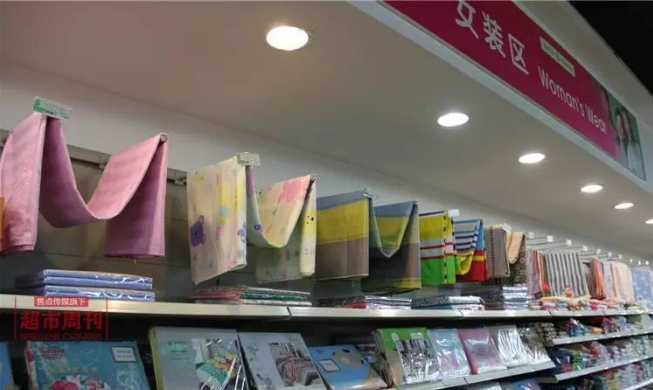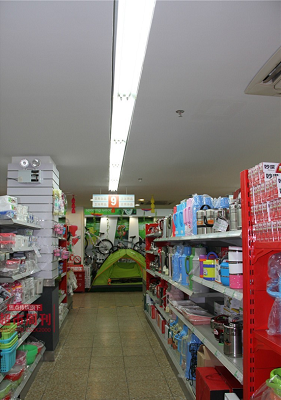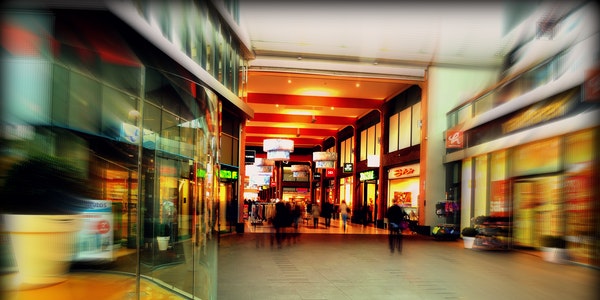1. Selection of Lights
Supermarkets generally use T8 fluorescent light strips as lighting sources. The advantage is that the illumination is uniform and the light is soft. But the disadvantage is that the number of lights and lanterns is large and the power consumption is large. At present, some supermarkets have adopted ceiling lights with T5 spherical fluorescent lights. This can greatly save the lighting load, but its lighting quality is slightly inferior to that of light strips. Therefore, what kind of light source to use should be determined according to the actual situation.
2. Lighting System Control
The lighting system can be turned on directly through the switch in the lighting box, but this is not a good solution for large supermarkets. A three-phase contactor should be installed after the lighting main switch. The advantages of doing so are:
(1) It can realize centralized/local operation, and the supermarket control room can centrally monitor the operation of the lighting system of the entire supermarket through relay linkage or BA system.
(2) When an accident occurs, the fire alarm system can cut off the lighting power supply (non-fire power supply) in time. This is closely related to the EPS emergency lighting system described later, and must be linked reliably.
Since the three phases of the lighting system are not completely balanced, a three-phase ammeter should be set to display the operating status of each phase.
3. Emergency Lighting System Design
Large supermarkets are crowded places, so the emergency illumination should not be less than 50% of the normal illumination according to the specification. The usual practice is to use 1/5 or 1/4 of the lights as emergency lights. Emergency lighting can be selected with nickel-cadmium batteries, or EPS system with normal lighting. The EPS system has higher requirements on lighting control. Because the emergency lights are both normal and accident lights, the power cord adopts three-core or four-core power supply. The normal and accident power supplies must not be powered at the same time, otherwise it will cause a short circuit between phases.
Therefore, through the reliable linkage of the fire alarm system, the emergency lighting system can be quickly activated after the non-fire power supply (including normal lighting) is cut off. This is a highly intelligent control method, and the EPS system is used to facilitate the management and maintenance of the battery in the future. Regardless of the emergency method adopted, the emergency working time of the battery shall not be less than 90min.
4. Line Laying and Installation
The light strip is used as the lighting source, and the installation height of the lights is generally required to be about 3.5m, and the three-phase power distribution of the lights is alternated. At present, there are two schemes for laying and installation of conventional lines: one is to use metal trunking, and the other is to use plug-in lighting bus. Due to price factors, lighting busbars are still difficult to promote at present. However, the plug-in modularization of its products should be a development direction for the power distribution of large lighting systems in the future. It should also be emphasized that the emergency lighting circuit should be laid separately and not shared with other circuits.
According to the requirements of “Fire Protection Design Regulations for Wires and Cables in Civil Buildings”, fire-resistant wires should be used for normal lighting lines, and fire-resistant wires should be used for emergency lighting lines. The use of metal trunking should consider laying PE wire for the grounding of lighting fixtures.
In actual engineering design, similar projects can refer to the above design scheme. Electrical designers have applied this scheme to the design of large-scale light steel structure workshops, and the effect is also very good.








